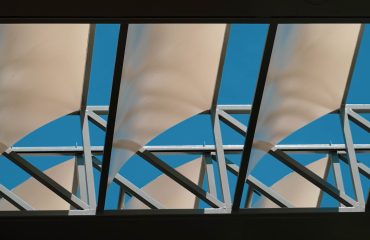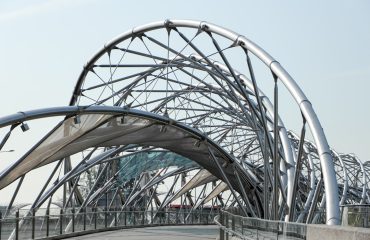The construction industry is undergoing a significant transformation, driven by the increasing demand for faster, more efficient, and sustainable building solutions. Prefabricated steel buildings are at the forefront of this revolution, offering a compelling alternative to traditional construction methods. This post delves into the exciting innovations shaping the future of prefabricated steel structures, exploring how these advancements are reshaping the landscape of architecture and engineering.
1. Sustainable Steel: Eco-Friendly Prefab Construction
Sustainability is no longer a niche concern; it’s a core requirement for modern construction. Prefabricated steel buildings are inherently more sustainable than many traditional building methods. Steel is a highly recyclable material, significantly reducing the environmental impact of demolition and waste disposal. Furthermore, advancements in steel production are continuously improving its environmental profile, with a focus on reducing carbon emissions throughout the lifecycle. Innovations like using recycled steel content and employing greener manufacturing processes are further enhancing the sustainability credentials of prefab steel structures. Moreover, the precision of prefabrication minimizes material waste on-site, further contributing to a reduced environmental footprint. The use of sustainable insulation materials within the steel frame further boosts the overall environmental performance.
2. Advanced Design & Engineering: Pushing the Boundaries of Steel
Modern software and advanced design techniques are revolutionizing the design and engineering of prefabricated steel buildings. Building Information Modeling (BIM) allows for highly accurate 3D modeling, facilitating better collaboration between architects, engineers, and contractors. This precision minimizes errors and delays during construction, leading to faster project completion. Furthermore, sophisticated software enables the design of complex and aesthetically pleasing steel structures, challenging the notion that prefabricated buildings are limited in their architectural expression. Advanced finite element analysis (FEA) allows engineers to optimize the design for strength, stability, and resilience, ensuring the building can withstand various environmental and seismic conditions.
3. Modular Construction: Speed & Efficiency Redefined
Modular construction is a key component of the prefab steel building revolution. By manufacturing building components in a controlled factory environment, the construction process becomes significantly faster and more efficient. This offsite manufacturing minimizes weather delays and on-site disruptions, accelerating project timelines. The modular approach also enhances quality control, as components are built to precise specifications in a controlled setting. This streamlined process reduces labor costs and improves overall project predictability, leading to significant cost savings for developers and clients. The pre-fabricated modules can be easily transported and assembled on site, making this approach ideal for remote or challenging locations.
4. Smart Technology Integration: The Connected Steel Building
The integration of smart technology is transforming prefabricated steel buildings into intelligent, responsive structures. Sensors embedded within the building can monitor various parameters such as temperature, humidity, and energy consumption, optimizing building performance and reducing operational costs. Smart building management systems can automate lighting, HVAC, and security systems, enhancing efficiency and occupant comfort. Data collected from these sensors can also provide valuable insights into building performance, allowing for proactive maintenance and improvements. This integration of technology extends to the construction process itself, using digital twins and real-time monitoring to track progress and manage resources effectively.
5. Seismic & Disaster-Resistant Design: Enhanced Resilience
Prefabricated steel buildings offer significant advantages in terms of seismic and disaster resistance. The inherent strength and ductility of steel allow for the design of structures that can withstand significant seismic activity. Advanced connection techniques and design considerations ensure that the building can absorb and dissipate seismic energy effectively, minimizing damage during earthquakes. Furthermore, the modular nature of prefabricated steel buildings allows for easier repair and reconstruction in the event of damage from natural disasters. This resilience makes prefab steel structures a particularly attractive option in areas prone to earthquakes, hurricanes, or other natural hazards. The use of advanced materials and design principles further enhances the overall resilience of these structures.
The innovations discussed above are not merely incremental improvements; they represent a fundamental shift in how we design, construct, and operate buildings. Prefabricated steel buildings are increasingly becoming the preferred choice for a wide range of applications, from commercial and industrial structures to residential developments and even specialized facilities. The future of construction is undeniably intertwined with the continued advancement and adoption of these innovative technologies.
SEO Tags:
- Prefab Steel Buildings
- Steel Building Innovations
- Sustainable Steel Construction
- Modular Steel Buildings
- Offsite Construction Methods




